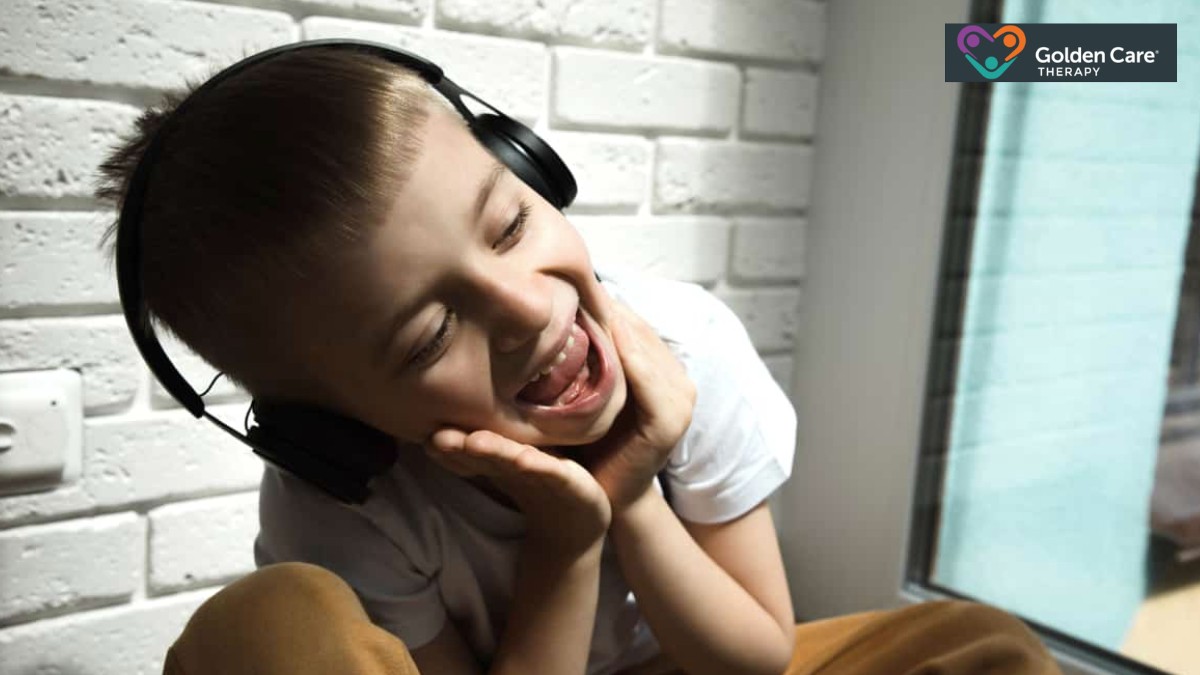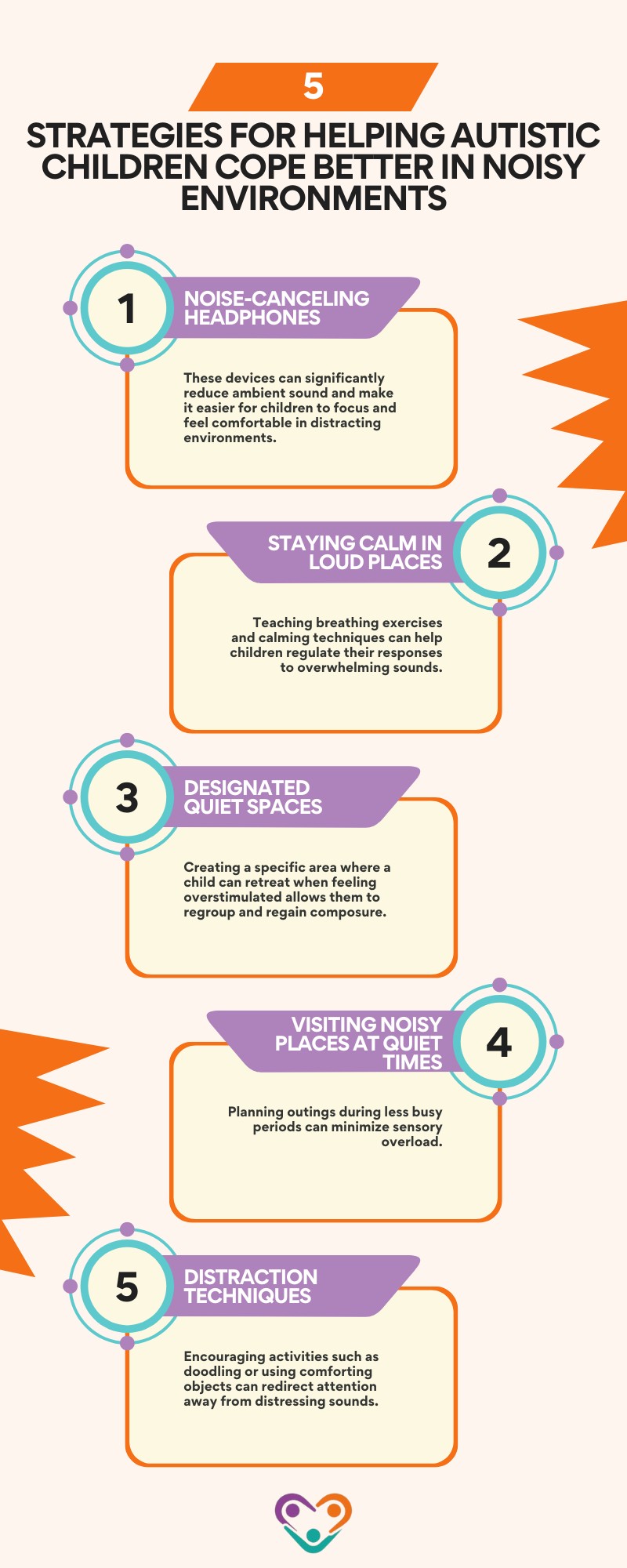Noise sensitivity is a common sensory issue among children with autism. Understanding how sensory processing works in these individuals helps clarify the impact of this sensitivity on their daily lives.
Individuals with autism often process sensory information differently from those without the condition. They may struggle to filter out irrelevant sounds or distractions. Based on research, over 90% of autistic individuals tend to ignore or overreact to ordinary sensory experiences.
Sensory processing differences can manifest as either hypersensitivity or hyposensitivity. While some may find everyday sounds bearable, others could experience significant discomfort or distress in response to typical noises. Hypersensitivity leads to acute reactions to sounds, while hyposensitivity may result in a lack of response to auditory stimuli.
Effects of Noise Sensitivity on Autistic Children
Noise sensitivity in children with autism can have profound effects on their daily life and well-being.
High levels of sensitivity can lead to anxiety, distress, and avoidance behaviors. Up to 70 percent of autistic individuals have reported decreased tolerance for sound at various times, which may contribute to challenges in social situations, learning environments, and community settings.
A study found that while hearing tests that didn’t require a behavioral response showed no significant difference between children with and without autism, 41 percent of children with autism acted as though they had hearing issues when a behavioral reaction was necessary.
This indicates a potential connection between attention difficulties and noise sensitivity.
Managing these sensitivities is essential for improving the quality of life for children with autism and their families. Recognizing how noise affects them is a critical first step in addressing their needs.
Research Findings on Autism and Noise Sensitivity
The exploration of noise sensitivity in autistic children provides critical insights into their sensory processing challenges. Various studies have uncovered the intricacies of how individuals with autism respond to auditory stimuli and the subsequent impacts on their daily lives.
According to research, there’s a significant variance in how individuals with autism respond to sensory information, particularly sounds.
Studies suggest that from 30 percent to over 90 percent of individuals with autism either ignore or overreact to ordinary sensory stimuli such as sights, sounds, and smells. This ineffective filtering leads to challenges in modulating reactions to various environmental noises.
Moreover, autistic children frequently exhibit stronger autonomic reactions compared to their typically developing peers when exposed to distracting sounds.
These heightened responses can elicit greater behavioral reactions, such as anxiety or distress, in response to these noises.
That said, the sensitivity to noise can significantly disrupt daily living for children and teens with autism. Research has shown that teens with autism encounter heightened difficulties in managing noise in everyday scenarios, particularly if they struggle to assess the loudness of different sounds.
This can lead to increased anxiety and difficulty focusing in environments where noise is prevalent, such as schools or crowded places.
The consequences of noise sensitivity can manifest in various ways, including:
- Difficulty concentrating, increased anxiety
- Avoidance of gatherings or public spaces
- Stress during common activities like grocery shopping
Overall, understanding the link between autism and noise sensitivity is essential for parents, caregivers, and educators. It can assist in developing effective strategies to help those with autism manage their reactions to auditory stimuli, facilitating a more comfortable daily experience.

How Hearing in Children with Autism Works
Understanding how children with autism experience noise sensitivity involves examining their hearing capabilities and how they respond behaviorally to sound.
Behavioral response tests evaluate how children react to auditory stimuli and are often used to assess hearing ability. A study indicated that there was no significant difference in the hearing of children with autism and those without when tests did not require a behavioral response.
However, a concerning finding emerged: 41% of children with autism acted as though they did not hear normally at least once during tests, necessitating a behavioral reaction.
This suggests that factors other than hearing ability may be influencing their responses. Specifically, issues related to attention could be responsible for these discrepancies in behavior.
As a result, parents and caregivers have to understand that an apparent lack of responsiveness does not necessarily indicate hearing impairment.
It’s also worth noting that attention plays a significant role in how children with autism interact with their environment. Research indicates that some autistic children may underreact to sound. This underreaction can often be attributed to attention problems rather than sensory processing difficulties or actual hearing impairments.
As a result, when assessing their auditory responsiveness, parents and caregivers need to consider the child’s focus and engagement during testing. It may be beneficial to create a supportive environment combining visual cues and sound in a way that helps the child concentrate better.
When assessing a child’s auditory responsiveness, it’s important to consider how sensory sensitivities, like those discussed in Understanding Why Certain Textures Upset Autistic Children, can impact focus and engagement.
Tips for Managing Noise Sensitivity
Effectively managing noise sensitivity in children with autism is vital for improving their overall well-being and daily functioning.
Occupational therapists trained in sensory processing play a crucial role in managing noise sensitivity in autistic children. They recommend a variety of strategies to help children cope better in noisy environments. Some effective approaches include:

In addition to therapy strategies, various tools can assist in reducing noise sensitivity for children with autism. Some of these include:
- Earplugs: Simple and discreet, earplugs can help reduce noise levels effectively in many situations.
- Noise-Canceling Headphones: As noted earlier, these can create a sound-free environment, encouraging participation in daily activities.
- Sound Machines: These devices can generate white noise or calming sounds that mask other disruptive noises, creating a more soothing environment.
- Soft Furnishings: Adding carpets, cushions, and curtains in a room can absorb sound and minimize echoes, providing a quieter atmosphere.
These strategies can significantly aid in managing noise sensitivity in children with autism, making environments more comfortable and accessible.
The Bottom Line
Noise sensitivity is a significant challenge for many children with autism, deeply affecting how they experience the world around them. While their hearing may be physically typical, their sensory processing and attention differences can make everyday sounds overwhelming.
Understanding these responses helps caregivers, educators, and therapists better support these children.
With the right strategies, from calming techniques to practical tools like noise-canceling headphones, we can make daily life more manageable and less stressful for autistic children who struggle with noise.
At Golden Care Therapy, we go beyond basic solutions — we provide compassionate, personalized ABA therapy in New Jersey, Indiana, New York, Georgia, and Florida. Our dedicated therapists work closely with each child to ensure meaningful progress and lasting support, tailoring interventions to meet their unique needs. If you’re looking for a trusted partner in your child’s development, reach out to us today. Contact us to learn how we can help your child thrive in a quieter, more comfortable world.
Sources:



